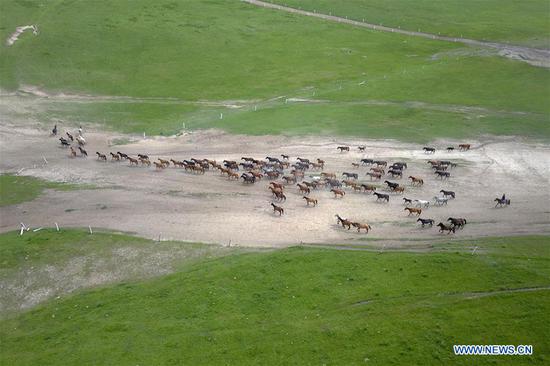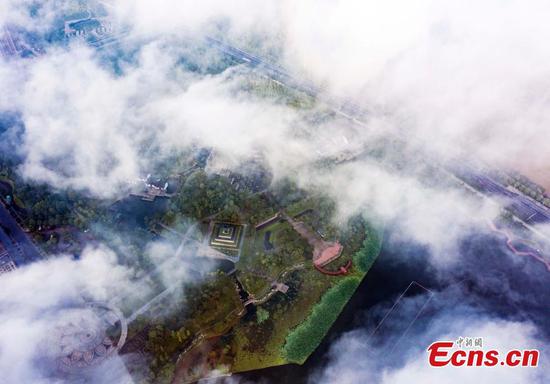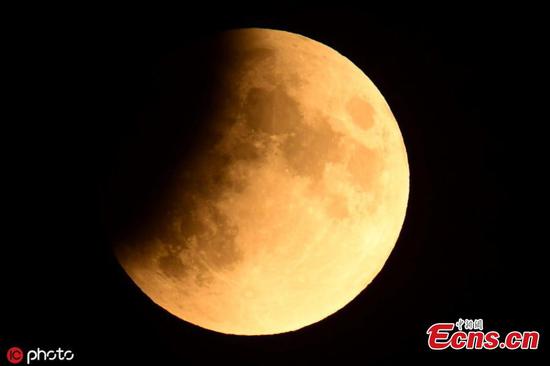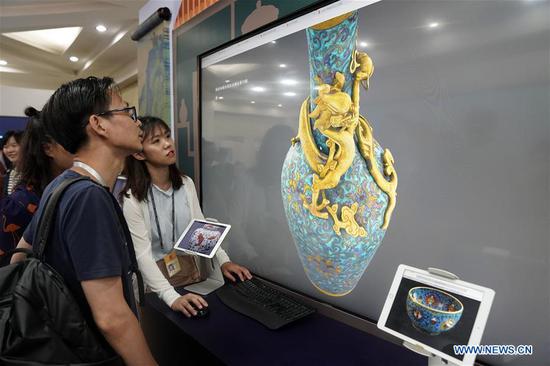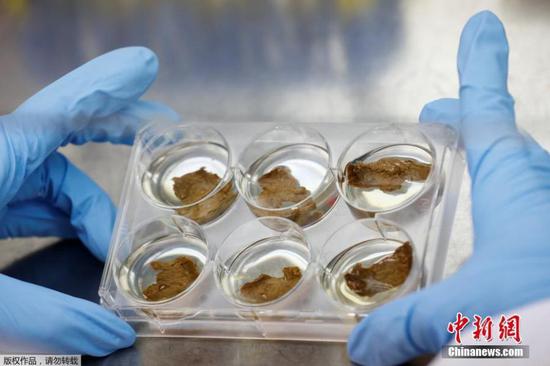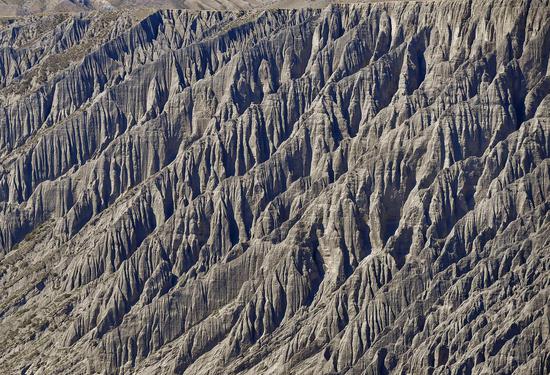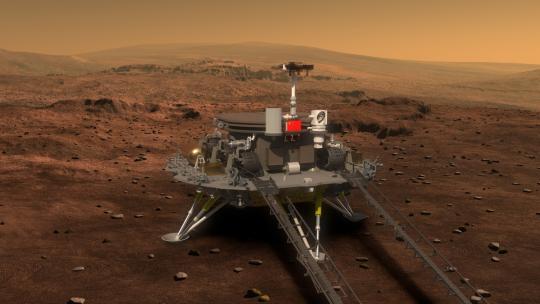
Artists' impressions released by the State Administration of Science, Technology and Industry for National Defense on Aug. 23, 2016, illustrate the design of the nation's Mars probe and rover. (Photo/Xinhua)
The launch window for a Mars probe appears once every two years, when conditions are favorable for scientists to attempt further exploration of the Red Planet.
Several probes are scheduled to be launched next year, signaling probably the most intense period of Martian exploration in history, Pang Zhihao, a spaceflight researcher at the China Academy of Space Technology, told Beijing News.
In addition to China's Mars 2020 mission spacecraft, which has yet to be officially named, NASA's 1 metric ton rover, the European Space Agency-Russian ExoMars lander and rover, and orbiters from the United Arab Emirates and India are scheduled to be sent to Mars next year, according to SpaceNews.
Mars' orbit brings the planet relatively close to the Earth about every 26 months. Scientists take advantage of that proximity to launch probes and save time and energy on the journey. Missing the launch window will result in another 26-month wait.
Chinese scientists anticipate that the country's first mission to the Red Planet will include orbiting, soft landing and roving on the Martian surface, an unprecedented achievement in the history of space flight. Only NASA has successfully orbited and landed on Mars in one mission, while the European Space Agency has twice attempted to land a working probe, but failed both times.
China's plan to achieve all three goals in one mission is challenging. According to The Guardian, Mars is known as the "graveyard of spacecraft" because the success rate to date is 40 percent, including missions such as landing a probe, orbiting the planet and conducting flybys.
Compared with 380,000 kilometers, the average distance from the Earth to the moon, the closest distance between Earth and Mars is 55 million km.
The farther the probe goes, the weaker the signal will become, resulting in a delay of at least 10 minutes in communications after it lands. During that time, the probe will have to make judgments based on figures inputted by researchers in advance, according to Beijing News.
In an interview, Zhang Rongqiao, chief designer of the Mars mission, said the probe's job will be to investigate the landscape, soil, environment and atmosphere, and the planet's internal structure, along with the distribution of water and ice.
Sci-fi movies featuring Mars have stimulated interest in life on the planet, and even in building a second human habitat. However, permanent relocation remains a hugely difficult concept, Pang told Beijing News.
A manned landing would have to overcome several technical obstacles. The astronauts would require plenty of life resources, while more-powerful rockets and spacecraft would be required. However, that would not reduce the risk of muscle atrophy, loss of bone minerals and exposure to high levels of radiation during the long flight.
It is estimated that a nuclear-powered rocket could reach 80,000 kilometers an hour, four times the speed of regular rockets, and shorten the journey time to one or two months. "However, it would be really hard to develop one. Landing a human on Mars in 2030 would be a really tough mission," Pang said.
Other hurdles would include building a transfer station on the moon and the long-term transformation of Mars.














